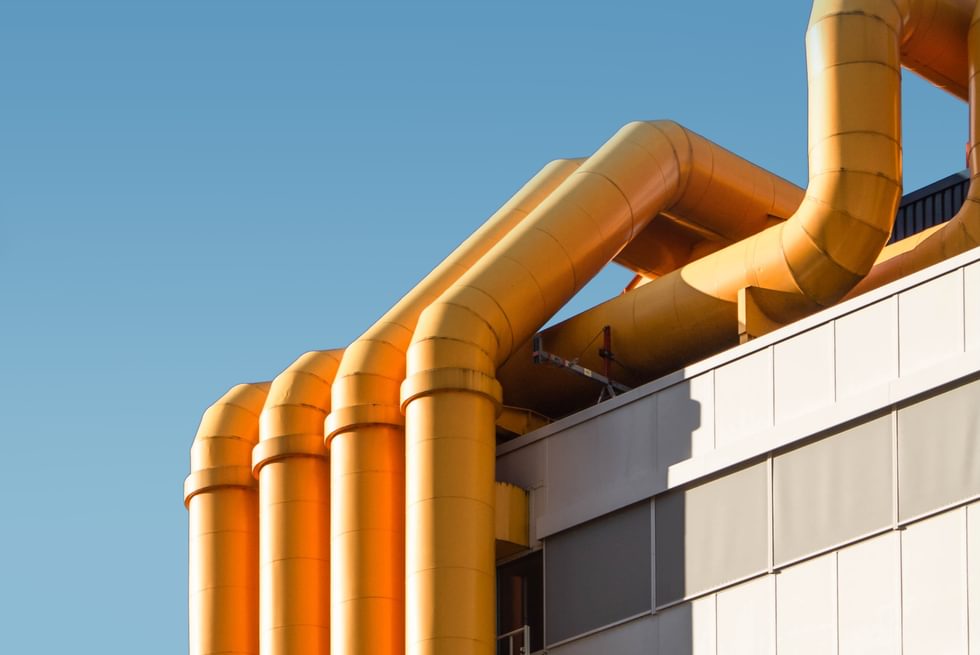Suspension
From the Series: The Infrastructure Toolbox
From the Series: The Infrastructure Toolbox

On March 5, 2015, the new government of Sri Lanka headed by President Maithripala Sirisena announced that it had suspended a controversial $1.5 billion project headed by a Chinese firm. The Colombo Port City Development Project entailed creating a landfill of 575 acres in the city of Colombo’s harbor, with hotels, apartments, and office buildings that would attract as much as $13 billion in foreign investment. The project had resulted from a deal between the previous president, Mahinda Rajapakse, and China’s president Xi Jinping. Its suspension was reported to cost the Chinese firm in charge of the project $380,000 a day, idling as many as five thousand people.
Given that China is Sri Lanka’s largest aid donor and has already invested $5 billion in the country, it is expected that construction on the project will soon resume. However, the harbor project’s suspension points to the temporality of infrastructure, to the ever-present gap between the start and completion of infrastructure projects. We often think of infrastructure in terms of its role in bridging distance and space—in connecting people and places, transporting goods, and linking geographically dispersed locations by cables, wires, pipelines, communication towers, geostationary satellites, and so on. Yet while the temporality of infrastructure is less evident than its spatiality, it is no less important.
We can understand a lot about social futures by looking at infrastructure. Why? Because infrastructures are often long-term investments. They tell us a great deal about aspirations, anticipations, and imaginations of the future (see Appadurai 2013): what people think their society should be like, what they might wish it to be, and what kind of statement the government wants to make about that vision. This is why every aspiring nation-state wants to build shiny steel- and glass-encased airports, operate a modern subway system, and pave new highways. A good metaphor for the kind of vision encoded in infrastructure is found in the image of the suspension bridge. A bridge links two bodies of land over water or a gorge. It thus serves to connect one geographical space to another and to enable people and things to move between them. But new bridges also symbolize movement into the future, into a particular kind of modern future whose phantasmagoric qualities are wonderfully captured in the Philippine film Perfumed Nightmare (1977).
Twenty-five years of rapid economic growth—a rate of more than 6.5%, and more than 7.5% in the last decade—have left urban India as one large construction site. Nor is this a phenomenon limited to India: the skyline of every major urban center in Asia is similarly filled with mechanical cranes. It is no surprise that the machine, named for its resemblance to the long-limbed grallatorial bird, should also participate in flights of social imagination. Mechanical cranes are constructing more than infrastructure: they are building a vision that promises a better future and, at least for some people, a better life.
I do not simply want to write against a teleology of infrastructure that contrasts its promise of a modern future, bright with anticipation, to what it actually delivers—to the gap between promise and performance. If promise did not exceed what was actually delivered, one suspects that many infrastructural projects would never get off the ground. A simple cost-benefit analysis demonstrates, for example, that most new stadia for sports teams earn negative rates of return. Public subsidies for such stadia, or for malls with luxury stores, represent one of an array of mechanisms increasingly employed to justify subsidizing the rich by taxing the poor. Reverse taxation of this kind is possible not on the grounds that sports stadia and luxury malls deliver services, but because they construct a particular vision of the future—a spectacular one, filled with possibility.
By drawing attention to the phenomenon of suspension (cf. Choy and Zee 2015), I want to emphasize the temporality of infrastructure. It is assumed that projects, once started, will be completed. Thus, infrastructure that is not yet in place is deemed incomplete, on its way to completion. The language of delays participates in the logic of finance capital. In that world, delays are expensive because interest costs on the massive amounts of capital sunk into infrastructure projects add up with every additional day that the project takes to finish. If the project takes too long, the interest charges can outweigh the profits to such an extent that the project’s rate of return becomes negative.
While such calculative techniques draw attention to the durée of the project and, hence, make us think about the temporality of infrastructure, they do not question the narrative of completion as telos. Infrastructure projects are not always completed: completion is not the only possible outcome once a project begins. Such projects can be suspended for short periods—or forever. They can also be dismantled, torn down, and removed. In India, each of these three possibilities is very much alive whenever a new infrastructure project is announced. The bridge to the future is always under erasure, and we do not know where it will lead.
Suspension, then, instead of being a temporary phase between the start of a project and its (successful) conclusion, needs to be theorized as its own condition of being. The temporality of suspension is not between past and future, between beginning and end, but constitutes its own ontic condition just as surely as does completion. If we did not participate in the hegemonic project of infrastructure as a bridge to the future, but rather approached it as always already in suspension, we might be better able to theorize the peculiar temporality of infrastructure in India, Sri Lanka, and other parts of the world.
Appadurai, Arjun. 2013. The Future as Cultural Fact: Essays on the Global Condition. New York: Verso.
Choy, Timothy, and Jerry Zee. 2015. “Condition—Suspension.” Cultural Anthropology 30, no. 2: 210–23.
Tahimik, Kidlat, dir. 1977. Perfumed Nightmare (Mababangong bangungot). 93 min.